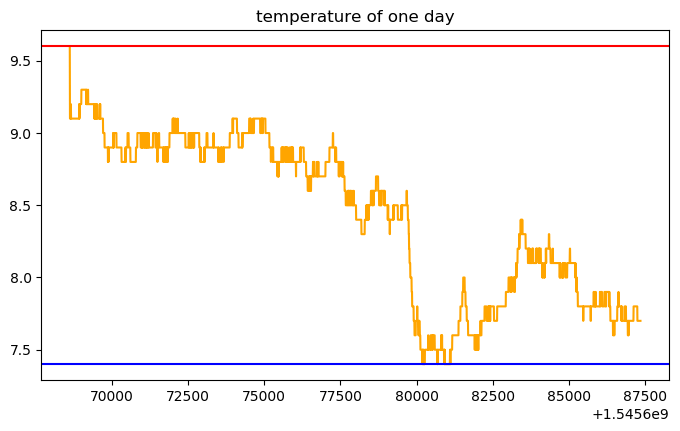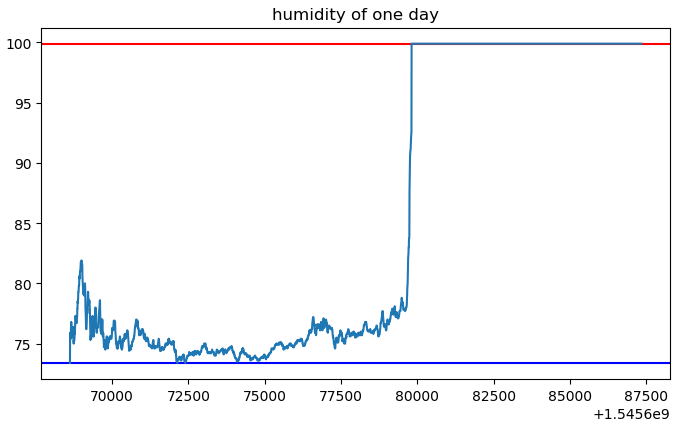1.目的与效果介绍
利用温湿度传感器对一段时间内的温度、湿度进行连续观测,并绘制出变化曲线图,如下。


2.硬件准备
主要需要准备温湿度传感器一个,这里我用的是DHT22,接口非常简单,按照之前博客接树莓派的GPIO口就可以了。3.3V和5V都可以。
3.代码编写
代码也比较简单,主要分为数据记录与绘图两部分,完整代码见Github项目:OneDayTemperature。这里主要贴一下部分绘图的代码。
# coding=utf-8
from matplotlib import pyplot as plt
import time
def readData(file_path):
date_file = open(file_path, 'r')
linux_times = []
times = []
temps = []
hus = []
lines = date_file.readlines()
for item in lines:
str_item = item.strip("\n")
str_time = str_item.split(",")[0]
temp = str_item.split(",")[1]
hu = str_item.split(",")[2]
if float(hu) > 100:
continue
times.append(time)
lt = time.strptime(str_time, "%Y-%m-%d %H:%M:%S")
timeStamp = int(time.mktime(lt))
linux_times.append(timeStamp)
temps.append(float(temp))
hus.append(float(hu))
return linux_times, times, temps, hus
def drawPlot(times, temps, hus):
plt.figure(1)
plt.title("temperature of one day")
plt.plot(times, temps, color='orange')
max_temp = max(temps)
min_temp = min(temps)
plt.axhline(max_temp, color='red')
plt.axhline(min_temp, color='blue')
plt.figure(2)
plt.title("humidity of one day")
max_hu = max(hus)
min_hu = min(hus)
plt.axhline(max_hu, color='red')
plt.axhline(min_hu, color='blue')
plt.plot(times, hus)
plt.show()
if __name__ == '__main__':
linux_times, times, temps, hus = readData("records.txt")
drawPlot(linux_times, temps, hus)
在代码中对于一些错误的观测数据,通过if语句进行了剔除。
5.总结
本篇博客实现的内容比较简单,主要是温湿度传感器的使用以及利用Matplotlib绘图。
本文作者原创,未经许可不得转载,谢谢配合
